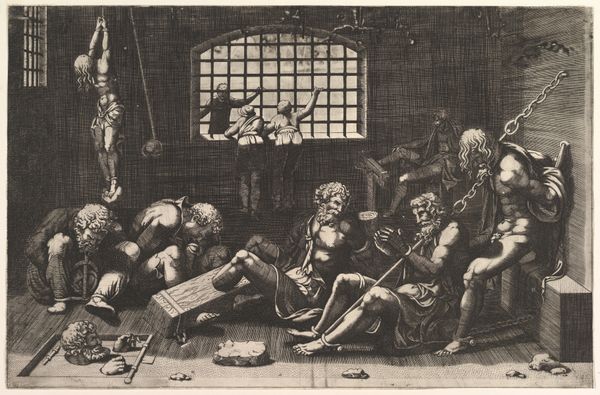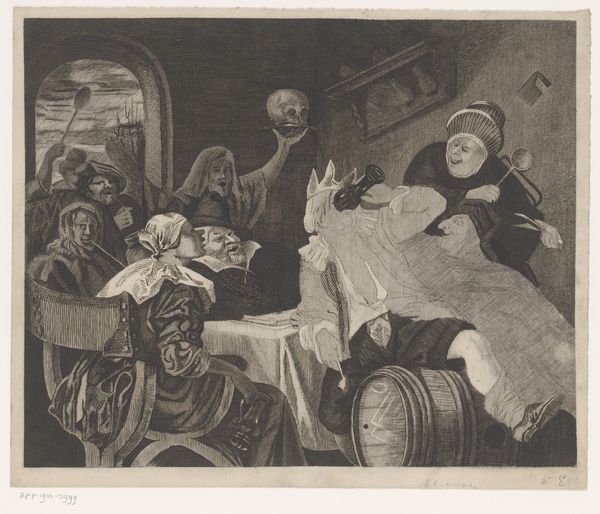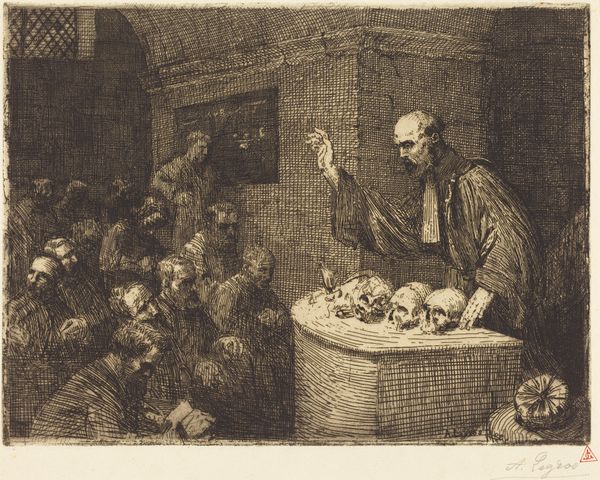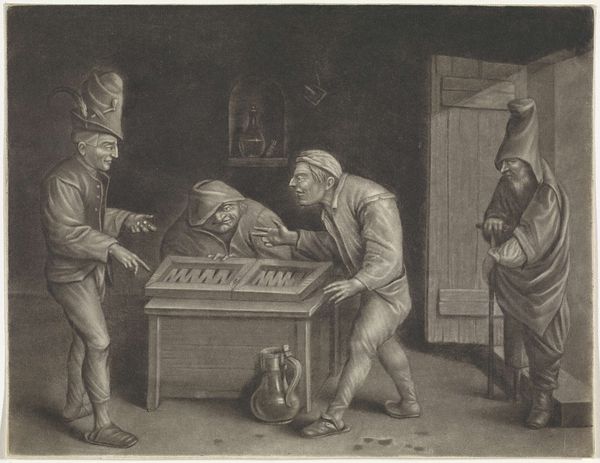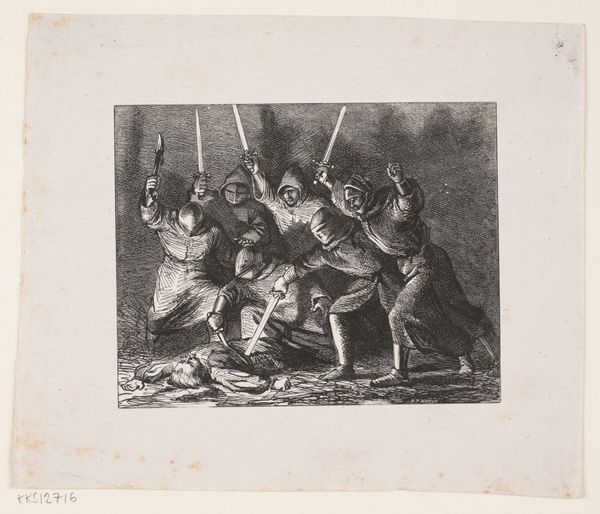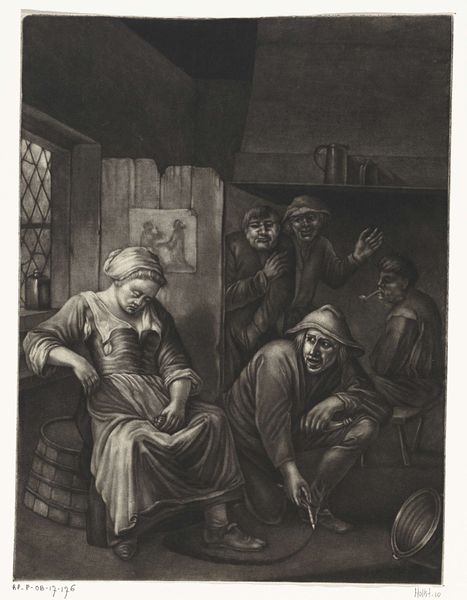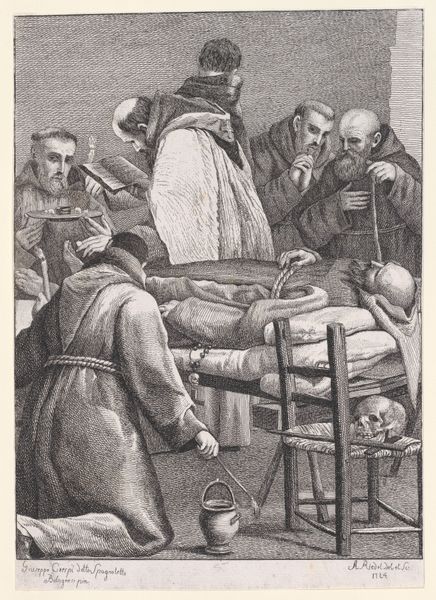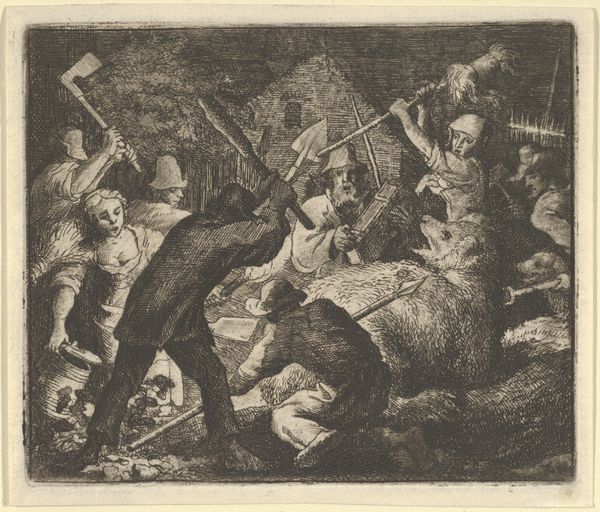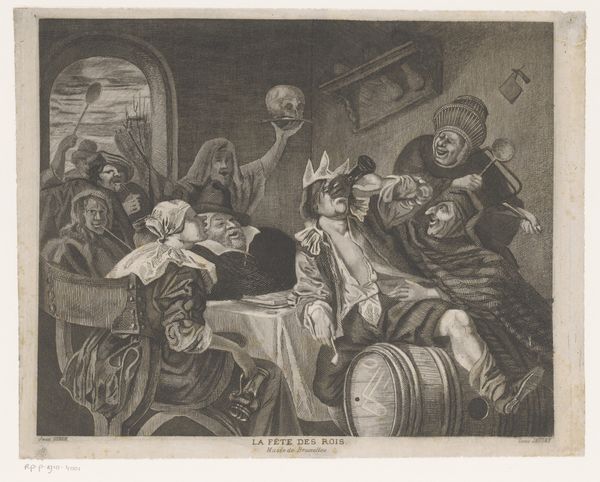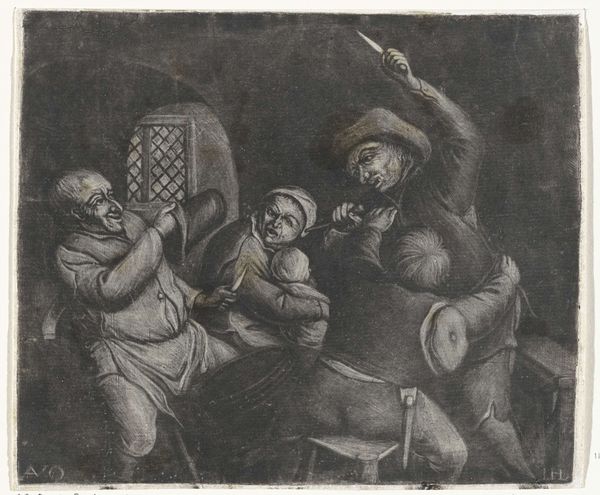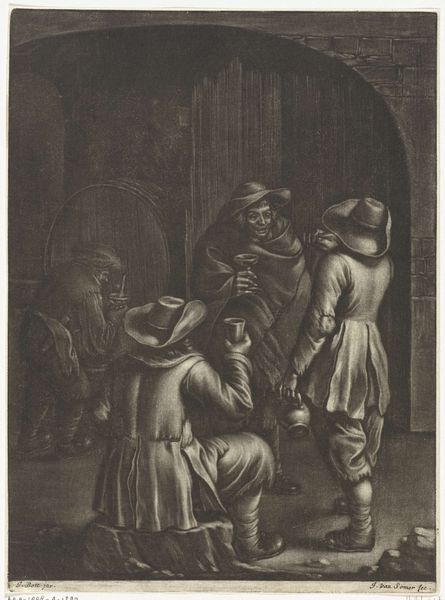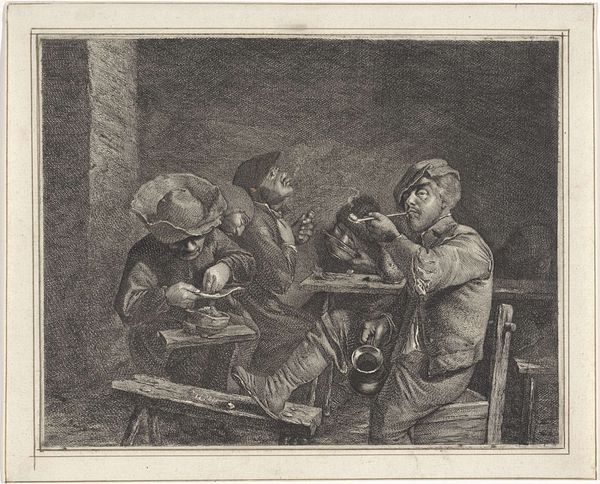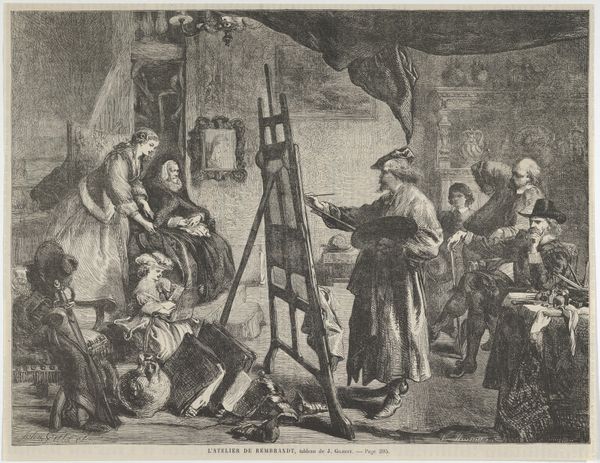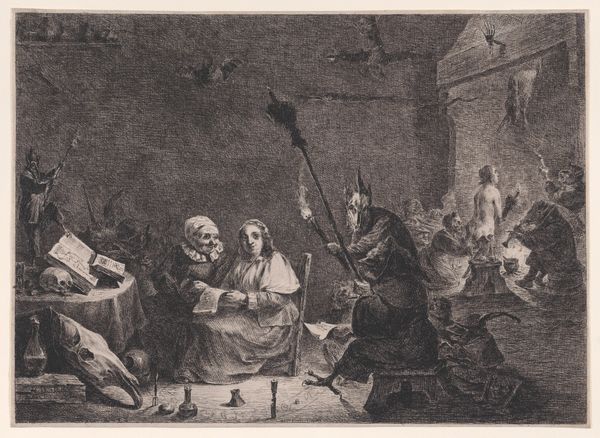
drawing, print, etching
#
drawing
#
negative space
# print
#
etching
#
genre-painting
#
history-painting
Dimensions: Sheet: 7 7/8 × 10 3/16 in. (20 × 25.8 cm)
Copyright: Public Domain
Curator: There’s an undeniable somberness to Jean Jacques de Boissieu's 1795 etching, “Monks Chanting,” currently residing at the Metropolitan Museum of Art. The clustered figures cast such weighty presence despite the print’s dimensions. What impressions strike you most vividly? Editor: A feeling of constrained fervor. Look at the repetition of those hunched forms; it speaks volumes about ritual, about conformity and the physical labour of religious practice, even as a single monk kneels isolated in the foreground. It’s all presented using a relatively uniform tonality. I want to examine what etching enabled the artist to accomplish. Curator: Exactly. Etching allowed for very fine lines to build tone and describe texture and form. We need to consider the cost of the materials, who the patrons were, the location this scene represents—all would give us an expanded understanding of its significance. Editor: Yes, but let’s also acknowledge the silence implied, the power dynamics at play between the kneeling figure and the standing monks. Where does devotion end and obedience begin? Boissieu sets the scene with these considerations firmly planted in the minds of those with the authority. How complicit are they, how aware are they of what they do to silence difference or agency through these oppressive rituals? Curator: An interesting position, viewing it from the perspective of implicit power and gender, especially. I suppose what I am thinking is if it was printed at scale how this access afforded different social strata to encounter a genre or historical painting depicting something akin to social realism? It makes me wonder about printmaking’s role in the development of visual communication at this moment. Editor: I think our discussion speaks volumes about how different perspectives can enrich our experience. Hopefully, others will also take up our position in the space, observing the piece as something which might affect real change in the world. Curator: Right. Thinking about all the people who came before who toiled, designed and made this is such an empowering feeling of connection and history!
Comments
No comments
Be the first to comment and join the conversation on the ultimate creative platform.
